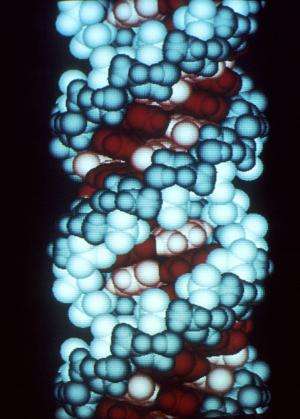'Junk RNA' molecule found to play key role in cellular response to stress

A study from Massachusetts General Hospital (MGH) investigators has found a surprising role for what had been considered a nonfunctional "junk" RNA molecule: controlling the cellular response to stress. In their report in the Dec. 15 issue of Cell, the researchers describe finding that a highly specific interaction between two elements previously known to repress gene transcription—B2 RNA and EZH2, an enzyme previously known only to silence genes—actually induces the expression of stress-response genes in mouse cells.
"EZH2 is part of a structure called the Polycomb Repressive Complex 2, which silences target genes," says Jeannie T. Lee, MD, PhD,of the MGH Department of Molecular Biology, senior author of the report. "But a big paradox in the field has been that EZH2 is found at the sites of both active and inactive genes. We have shown, for the first time, that EZH2 can act outside of the PRC2 complex to activate genes through another mechanism—in this case by cleaving the B2 RNA molecule, which then activates stress response genes."
Less than 2 percent of the genome in mammals actually codes for proteins, and for many years it was thought that noncoding DNA was a useless artifact. While some is translated into RNA molecules required for maintaining and regulating cellular functions—such as transfer RNA and microRNAs - the impression that most noncoding RNA serves no function has persisted. This has been particularly true for long noncoding RNAs and is even more the case for molecules transcribed from "parasitic" retrotransposons—repetitive DNA sequences inserted throughout the genome. But recent studies in mouse cells have indicated that RNA transcribed from the B2 retrotransposon binds to stress genes and suppresses their transcription.
Previous research by members of Lee's team found more than 9,000 nuclear transcripts that bind to EZH2. Data from that study also suggested that EZH2 interacted with some repetitive RNAs—including retrotransposon-transcribed RNAs—but at the time the association was not clear. The current study was designed to investigate whether that association was real and functional. Their cellular experiments confirmed that EZH2 binds to B2 RNA and, when subjected to heat, cuts or cleaves the RNA molecule. That cleavage of B2 RNA—which otherwise binds to and silences genes that protect against cellular damage by heat shock—allowed the transcription of those heat-shock genes.
"Our findings imply that B2 is a key regulator of the stress response and probably has that role in all types of cells," says Lee, who is a professor of Genetics at Harvard Medical School. "We and others have studied B2 cells in mice, but these same types of short interspersed nuclear elements are found in human cells, where they are quite different. While it remains to be seen whether human SINEs have similar properties, I wouldn't be surprised if they do."
Future studies will investigate the specific mechanism by which EZH2 is attracted to stress genes and how it cleaves the B2 RNA molecule. Since the cellular stress response both protects against some important diseases and is sometimes induced therapeutically—for example, to block the proliferation of cancer cells—improving the understanding of the stress response is likely to make important contributions to human health.
More information: Cell, DOI: 10.1016/j.cell.2016.11.041
Journal information: Cell
Provided by Massachusetts General Hospital















